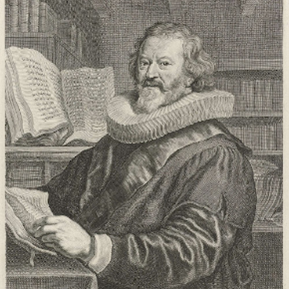Aristotle, Homer and the Chain of Philosophy

Interpret Rembrandt’s “Aristotle with a Bust of Homer”, in the Metropolitan Museum of Art, New York, USA, which he painted in 1653 for Antonio Ruffo, a Sicilian aristocratic collector. A medallion is suspended from a heavy gold chain, adorned with the head of Alexander the Great, Aristotle’s student and patron.
Is the ruminating philosopher contrasting material and spiritual values? Or is he comparing art with other forms of intellectual activity, such a science and philosophy? Or is he reverting back to that ancient quarrel between poetry and philosophy? Or is the primary interest that Homer is blind, while Aristotle, who is touching him but not looking directly at him, was a natural scientist who favoured an empirical method?
The most likely view is that Aristotle, who seems lost in philosophical thought, is contemplating the question of causation itself. For Aristotle, the activity of contemplation, which he called theōria (our word ‘theory’), is not limited to the appearances of things as he finds them contingently, but is always concerned with the causes that produced them – formal, material, efficient and final. In his Metaphysics, he repeatedly uses works of sculpture when trying to illustrate what he means by the four different causes. This focus on visual arts inevitably drew the interest of artists such as Rembrandt to the Metaphysics.
But the painting’s conjunction of Homer with a golden chain would prompt any classically educated seventeenth-century viewer to think of the golden chain with which Zeus in the Iliad boasts he could drag earth, sea and all the other gods to Olympus, and bind them there to dangle in space (8.18-27). Zeus’ golden chain was adopted by the Neoplatonists as an image of the mind of God or of the divine order in the universe. It was a familiar image in the sixteenth and seventeenth centuries; for example, in Bacon, it is an image of philosophy, dialectic, and reason as well as cosmology.
But in 1650, three years before Rembrandt painted the picture, renowned classicist and fellow Dutchman Gerhardus Johannes Vossius suggested a new interpretation. For Vossius, the chain represented the inter-relationship of all the arts and sciences; the chain which connects the knowledge of particulars in the separate fields is the chain of philosophy.




